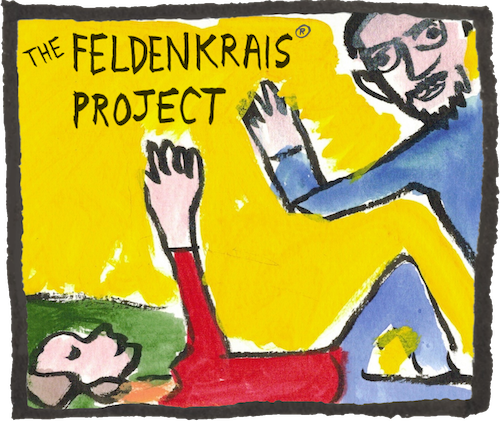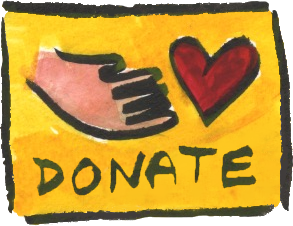Disclaimer: The Feldenkrais Method of somatic education is presented on this website for educational purposes and self-guided study only. The Method and all recordings, live online classes, pages, blog posts, and documents of any kind available from this website are not intended to be a substitute for professional help or medical treatment. Nothing on this website is intended to diagnose or treat any pathology, disease or injury of any kind. This website, all media files found on it, all live classes available through it, The Feldenkrais Project, Twin Cities Feldenkrais, LLC, and the creator of any and all of these files, and anyone featured on these files, cannot be held responsible for any injuries or discomfort that might arise while doing these lessons. If you have any doubts about whether doing Feldenkrais lessons is appropriate for you, be sure to consult your medical practitioner.
The following are service marks or certification marks of the Feldenkrais Guild of North America: Feldenkrais®, Feldenkrais Method®, Functional Integration®, Awareness Through Movement®, ATM®, FI®, Guild Certified Feldenkrais Teacher®, and Guild Certified Feldenkrais PractitionerCM.





This is excellent ATM, I had a broken ankle as well and the tibia kind of fractured in length..so this is wonderful for me. Thanks for sharing. best wishes Nevenka
The only bodily “ATM” I know is a gene which provides instructions for making a protein.
Can you be a bit more explicit?
THANKS 🙂
ATM in Feldenkrais study stands for Awareness Through Movement, the formal name of our verbally-led modality. Learn more here: https://feldenkraisproject.com/about-feldenkrais-method/
A lot of Feldenkrais regulars say “I did an ATM,” shorthand for studying an ATM lesson.
I loved and learned a lot from your list of other ATM acronyms. Forgive me for editing it out for the sake of brevity in these comments!
:-)))))) Thank you!
You are so wonderfully generous with your knowledge Nick. Well done!
Since I need to build up my arches, I have repeated this lesson many times, and each time I hear or discover something “new”. You infuse a lot of details and opportunities for learning into this and other lessons, which is one reason I never get tired of them.
I FULLY AGREE!
Nick is a wonderful teacher 🙂
I have done this lesson about 3 times. I think it is one of my favorites. This time, I had to sit back down on a chair shortly after completing the lesson…usually I like to walk around a bit and gaze into the expanded world…but something needed attention at my desk. In sitting, I felt myself more relaxed mentally but also a very, very clear sense of my sits bones; like they were the 4th metatarsals, supporting me. More secure base, better alignment in spine. Many thanks.
So … the answer to the “quiz” … is the cartilage on the inside of my heel? : )
I could tell you but it might spoil the fun for others…. [Actually, I replied to Julie privately with the answer.]
Thank you for your wonderful fresh way of leading the lesson into us and connecting it to everyday life. It helped me equalizing the feet
This is one of my favorite lessons to find my body, and how all the parts are connected and can integrate in a beautiful, soothing and graceful way. This lesson makes me feel whole and Nick’s guidance is so loving and clear, Thank you Nick
Wonderful, surprising and reinvigorating even on the third listen. Thanks so much Nick ! (From Brisbane Australia)
I really enjoyed this lesson. Gave me a whole new perspective on balance and standing. Thank you!
LOVE THIS!! my feet are awake!!
This is my current favorite lesson to teach students (and for me to do!) Last time I taught it, a student commented that he didn’t feel like himself after the lesson… he felt like Cary Grant!
Hello! I haven’t done this lesson yet – wondering, does this lesson involve lifting the pelvis? Thanks!
Yes, it uses a classic ATM structure called “spine like a chain” as a refrain and a way to sense what the reorganizing explorations of the feet, knees, and hips are changing. Spine like a chain lessons use a back-lying, knees bent configuration, lifting the pelvis into the air then slowly lowering the spine “link by link.”
Thanks Nick for this wonderful website, it was a great treasure that I found searching for exercises for my nephew, I have been doing feldenkrais for many years, but I’ve living in Santa Marta Colombia since 2017, so this is something big for me. I just finish this class and it is outstanding, congratulations for your work and thanks again for sharing it with the world.
What a great class! It helped me get my hamstrings and buttocks activated.
Fantastic class – I looked up the 4 metatarsal and I was imagining the correct one! Confusing and interesting – a great lesson to repeat.
Thanks, another great lesson. I noticed that my shoes are a little more worn down on the outsides of my heels so I think that means I am supinating ?
Hard to say from afar, but arch variability throughout the footstep is the name of the game.
When activating the arch, and doing this lesson for the first time, I find I have an internal whole body cringe sensation, leading even to a bit of irritation/frustration if I don’t take breaks. I associate this ‘cringe’ with challenging my nervous system, and it means I’m learning something new. Do you agree with that assessment, or have anything to say about this internal cringe feeling? My sense is that as long as the cringe isn’t too uncomfortable, I can keep going. I think it means I have a lot to learn about sensing my feet.
You may be right about that. It’s helpful to track the trend over the minutes of the lesson: is it getting easier, softer, gentler, more pleasant? If not either this lesson or how you’re doing it is a little too provocative for now; back off more or go on to another lesson. Yes to lots of breaks. Also some folks who have what’s described as a “high arch” benefit from particularly minuscule activations, and actually putting more time and attention into letting the arch down between movements. If that sounds like you, see if that helps and let me know!
Kia ora from ‘down under’ Nick (South Island, NZ)! Any thoughts/comments on cramped calves/toes/arch with this particular ATM? It’s most acute the more my knee is held still. With thanks. ps I have a 10yr old knee injury (blown meniscus/ACL & surgery)….the reason I discovered Feldenkrais (and eventually you), which I’ve been practicing for 3yrs.
Hello! I dream of getting to NZ one day – great to hear from a listener there. If you’re cramping it’s worth altering whatever you need to since it’s hard to learn anything while cramping. Sounds like letting the knee move more makes things easier? If so do that, even when the lesson requests something else. It might also help to really relax into the floor consciously with the weight of the foot as you roll it very slowly out and in. Thinking about the toes as passive passengers, etc….
That was a very nice lesson Nick. Thanks
Thank you, I loved how I gradually lifted lighter and more smoothly in this lesson until it really felt effortless. Being aware of (or using) the base of the fourth toe was a huge insight for me. A question – at one point you ask us not to let the knees point forward. I also found that when I pressed with the standing leg on the lying foot my pelvis lifted into the air (more on one side than the other) should I also inhibit this? I tried doing both – inhibiting and not inhibiting. Movement was much smaller when inhibiting but I felt that was more helpful for getting more movement in the ankle. Is that right?
I think I hear two questions about two different parts of the lesson, is that right? Re: the second one, follow your comfort and curiosity. There’s learning to be found in both more and less pelvis movement when stepping into the side of the other foot.
The first question, I think you’re asking about stopping the knees from moving forward/away from you. Near the end, right? In that you’ll find yourself driven up the floor a little bit (sliding up your mat). Let me know if you have a question about that, and thanks for commenting!
Remarkable! I suffer from neuropathy and was starting to fear/dislike walking because I can’t feel my feet as well as I should. The heightened awareness of the two “tripods” that we stand on – has restored a great deal of my confidence.
I do this lesson over and over. It’s made a huge difference. Thank you!
This lesson is changing my life. They all do really. So much gratitude for your teachings. I can’t begin to explain how these lessons have had an impact on my own being and how I interact in all the relationships around me from other humans, animals, the earth etc. your work is so special. Thank you.
Beautiful. There is something really special about this one – it changed my life too when I first learned it 15 years ago, and it’s always been on my mind since. So much so that it became the root of an entire course now, our Grounding for Liftoff Deep Dive.